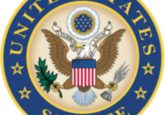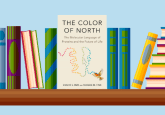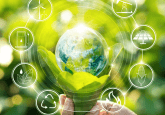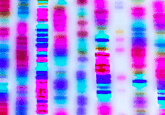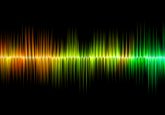The time for science communication is now

From the complexities of quantum physics to the changing variables influencing ecology, communicating science can be a challenging endeavor. Now, a growing number of scientists motivated by changes in the political climate are improving coverage of their fields.

As more scientists compete for funding, researchers are becoming particularly invested in conveying the importance and relevance of their work to grant committees and the voting public. This heightened interest has been exacerbated by recent political developments and social movements in the United States and abroad.
As Thomas Hayden, Director of the Master of Arts in Earth Systems, Environmental Communication Program at Stanford University points out, the real issue is not just the new sense of urgency. “The current political situation has really increased the salience of science communication for a lot of people,” highlighted Hayden. “After all, [science] is specifically and in a fairly targeted way questioned and undermined from high levels and from central roles in the political sphere. That sharpens the focus and draws the attention of people who care about science and understand how important and valuable it is to society.”
Within science, some fields are affected more than others. Most notably, climate change research has become particularly politically contentious. With the United States pulling out of the Paris Climate Agreement and foreign leaders, such as France’s newly elected president Emmanuel Macron, inviting American climate and environmental scientists to pursue their research abroad, there is cause for concern. Now, scientists are speaking out more—as illustrated by last month’s March for Science—spearheading programs aimed at assessing the scientific accuracy of articles published online and developing academic programs to ensure that the next generation of researchers will improve science reporting.
Tracking Scientific Accuracy
Phillip Williamson from the University of East Anglia studies ocean acidification and recently led work for a UN report on the topic that highlighted the extent of ocean acidification and outlined models predicting its future development (1). As oceans absorb the increasing concentration of carbon dioxide in the atmosphere, their pH decreases. As such, ocean acidification is an apt indicator of ongoing climate change. “[Ocean acidification] is not a very controversial topic in that the data is usually well understood,” said Williamson.
Recently, an article by a Breitbart editor in The Spectator (3) criticized Williamson’s field of research, deeming it alarmist and claiming that investing in it is a waste of taxpayers’ money. For Williamson, this was the last straw.
Williamsons first raised his concerns about a number of scientific inaccuracies in the report—including the writer’s opinion, which was stated as fact, that ocean acidification will not affect species diversity or richness—to The Spectator editors and eventually raised the issue with the UK’s Independent Press Standards Organization. Williamson’s complaintfocused on the propagation of misinformation caused by a lack of due care in reporting.
“The conclusion at the end of that process was that the journalist was entitled to his own opinion and that freedom of speech was more important than accuracy of information,” said Williamson. “That’s worrying! It is important to distinguish someone’s opinion from directed disinformation.”
This experience led Williamson to propose creating a Scientific Honesty and Integrity Tracker, a rating system aimed at informing the public about the accuracy of the scientific content they are reading online, in an article published last fall in the journal Nature (4). He planned to base the integrity tracker on expert review of scientific articles, to be summarized in a rating ranging from 1 to 5 stars, with 5 stars reflecting the highest accuracy in scientific reporting. “It was in part to stimulate others to get involved,” shared Williamson.
As a result of his article in Nature, Williamson discovered that various fact-checking websites were already in place to carry out this function. “I had email exchanges with them encouraging them to continue their efforts and be better known so that people are able to realize the enormity of the task,” he said. In our brave new world of misinformation shared via social media, Facebook and Google are starting similar fact-checking projects beyond the realm of science to screen the credibility of all articles posted on their platforms.
Science Communications Training in Academia
The language of scientific discovery calls for honesty in divulging uncertainties. But a lack of familiarity with this way of presenting information can sometimes lead to confusion. “Journalists need to accurately translate this specialized language,” said Williamson. “The media mustn’t artificially create a conflict to have a story go against the tide by representing the minority opinion among scientists.” In other words, just because there are two sides to a story does not make them equally valid.
With his environmental communication program, Hayden has devoted his career to improving such science journalism and communication. He started as a biological oceanographer during his doctoral studies before transitioning to science writing. “It was a few years before I was completely comfortable with that decision,” shared Hayden. “But now 20 years later, I feel very good that I did it!”
After two decades as a science journalist, Hayden turned to the classroom to teach science communication at Stanford. Over the years, he found that more and more students wanted to make science communication their main focus, so in 2015, he launched the Master of Arts in Earth Systems, Environmental Communication degree. “I was really responding to this student demand for comprehensive cohesive top-to-bottom training on how to communicate all of the information learned in the environmental realm.”
Things have changed drastically over the span of two decades. “Twenty years ago, I was a real outlier for wanting to connect the public to what was happening in the laboratory and during fieldwork,” said Hayden. “Today, I love that students are pushing for this kind of training, for this kind of communication mindset. It should be part of how we train young scientists.”

